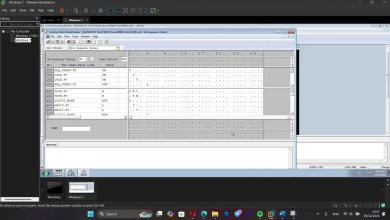how to install red hat linux on vmware workstation #redhat #installation #operatingsystem
Installing Red Hat Linux on VMware Workstation is a straightforward process, but it involves several steps. Here’s a step-by-step guide to help you through:
Prepare Your Environment
-Download VMware Workstation: Ensure you have VMware Workstation installed on your host machine. You can get it from the [VMware website](
Obtain Red Hat Linux ISO: Download the Red Hat Enterprise Linux (RHEL) ISO from the [Red Hat Customer Portal]( Note that you may need a subscription or evaluation license to access the downloads.
Create a New Virtual Machine
1.Open VMware Workstation:
– Launch VMware Workstation on your host machine.
2. Start the New Virtual Machine Wizard:
– Click on “File” and select “New Virtual Machine”. Alternatively, you can click “Create a New Virtual Machine”on the home screen.
3. Choose Configuration Type:
– Select “Typical (recommended)” and click “Next”.
4. Select the Installation Media:
– Choose “Installer disc image file (iso)” and browse to the location of your Red Hat Linux ISO file. Click “Next”.
5. Select the Guest Operating System:
– Choose “Linux” and select the appropriate version. For Red Hat Enterprise Linux 8, choose “Red Hat Enterprise Linux 8”. Click “Next”.
6. Name Your Virtual Machine:
– Enter a name for your virtual machine and choose a location to store the VM files. Click **”Next”**.
7. **Specify Disk Capacity**:
– Set the disk size according to your needs. For most installations, a minimum of 20 GB is recommended. Choose whether to store the virtual disk as a single file or split into multiple files. Click **”Next”**.
8. **Customize Hardware (Optional)**:
– Click on **”Customize Hardware”** if you want to adjust settings like memory, CPUs, network adapters, etc. Ensure you allocate sufficient resources for a smooth installation. Click **”Close”** when done.
9. **Finish the Wizard**:
– Click **”Finish”** to create the virtual machine.
### 3. **Install Red Hat Linux**
1. **Power On the Virtual Machine**:
– Select your newly created virtual machine and click **”Power on this virtual machine”**.
2. **Start the Installation**:
– The VM will boot from the ISO file and start the Red Hat Linux installation process. You may see a boot menu where you can choose **”Install Red Hat Enterprise Linux”** or similar.
3. **Follow the Installation Wizard**:
– **Language Selection**: Choose your language and region. Click **”Continue”**.
– **Installation Summary**: Configure settings such as date & time, keyboard layout, and installation destination. You may need to set up partitions if necessary.
– **Begin Installation**: Click **”Begin Installation”** and follow the prompts. You will need to set a root password and, optionally, create a user account.
– **Complete Installation**: Once the installation is complete, click **”Reboot”**. Make sure to eject the ISO file from the virtual drive to avoid booting from it again.
4. **Post-Installation Setup**:
– After rebooting, you may be prompted to complete some initial setup steps, such as configuring network settings and registering with Red Hat.
### 4. **Install VMware Tools (Optional but Recommended)**
1. **Power On the VM**:
– Ensure your Red Hat VM is powered on and logged in.
2. **Install VMware Tools**:
– In VMware Workstation, go to “VM” “Install VMware Tools”. This mounts the VMware Tools ISO inside the VM.
3. Mount and Install:
– Open a terminal in Red Hat, mount the VMware Tools CD, and extract the installer:
“`bash
mkdir /mnt/cdrom
mount /dev/cdrom /mnt/cdrom
tar -zxvf /mnt/cdrom/VMwareTools-.tar.gz -C /tmp
cd /tmp/vmware-tools-distrib
sudo ./vmware-install.pl
“`
– Follow the prompts to complete the installation.
4. Reboot:
– After installing VMware Tools, reboot your VM to apply the changes.
You should now have a fully functional Red Hat Linux virtual machine running on VMware Workstation. If you encounter any issues, checking VMware’s documentation or forums might provide additional insights.
[ad_2]
source




Super sir❤
Great job sir ❤